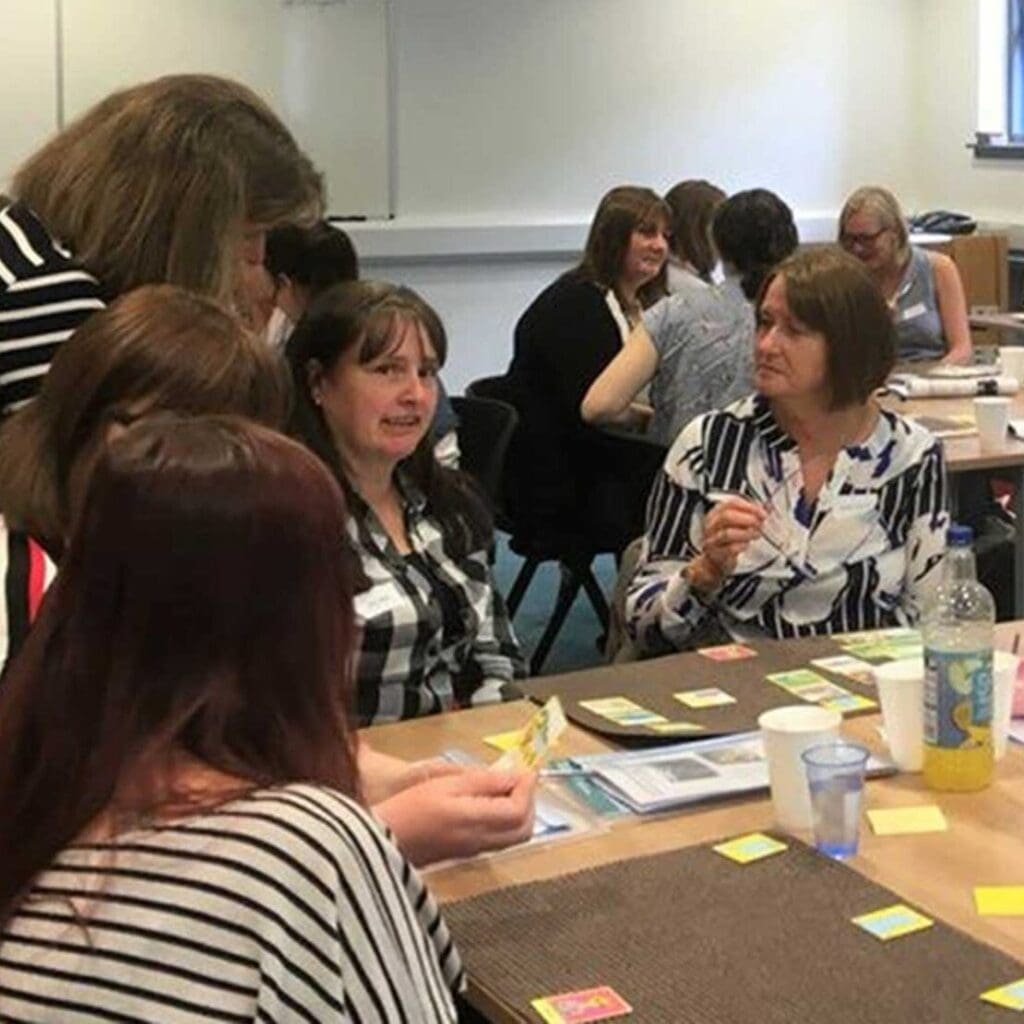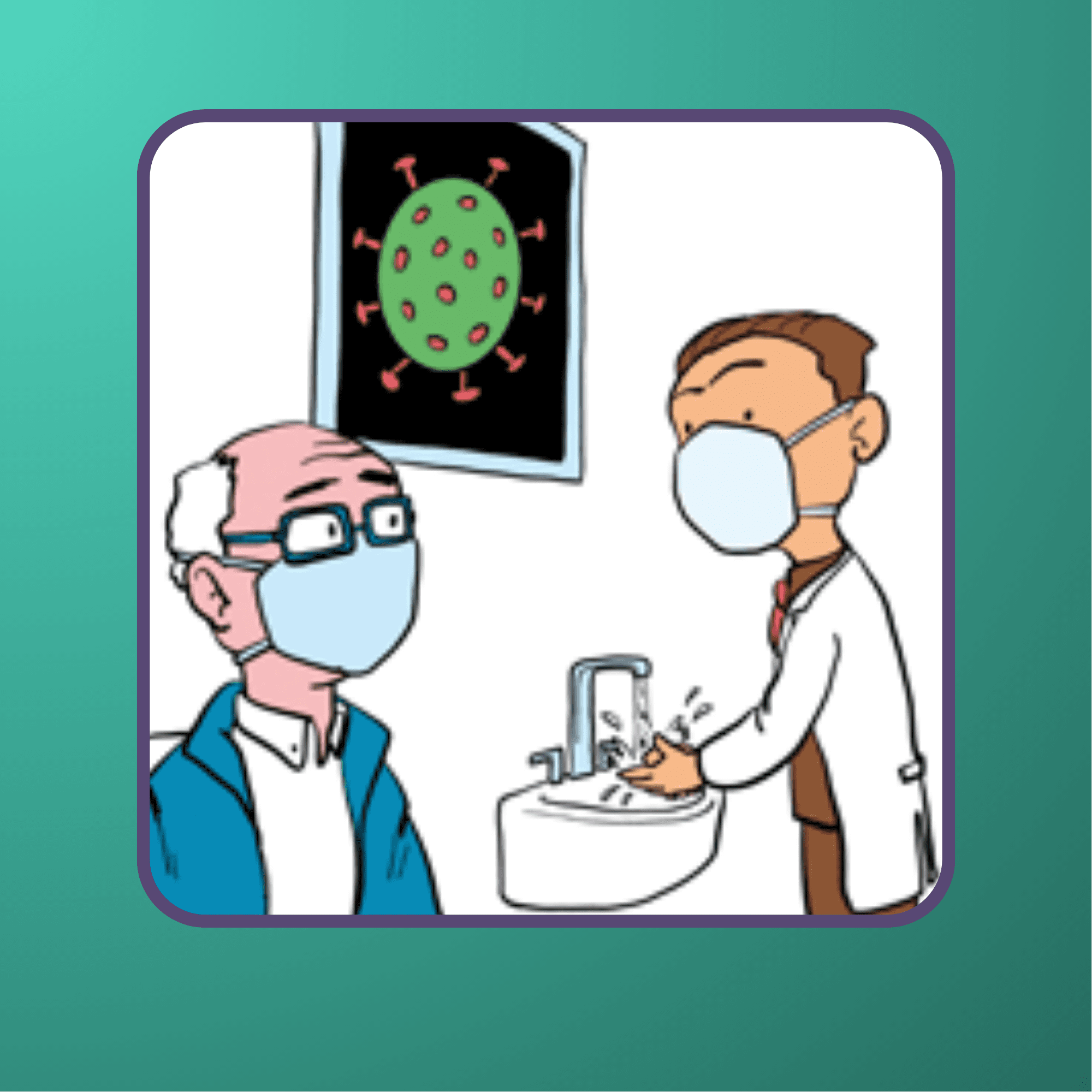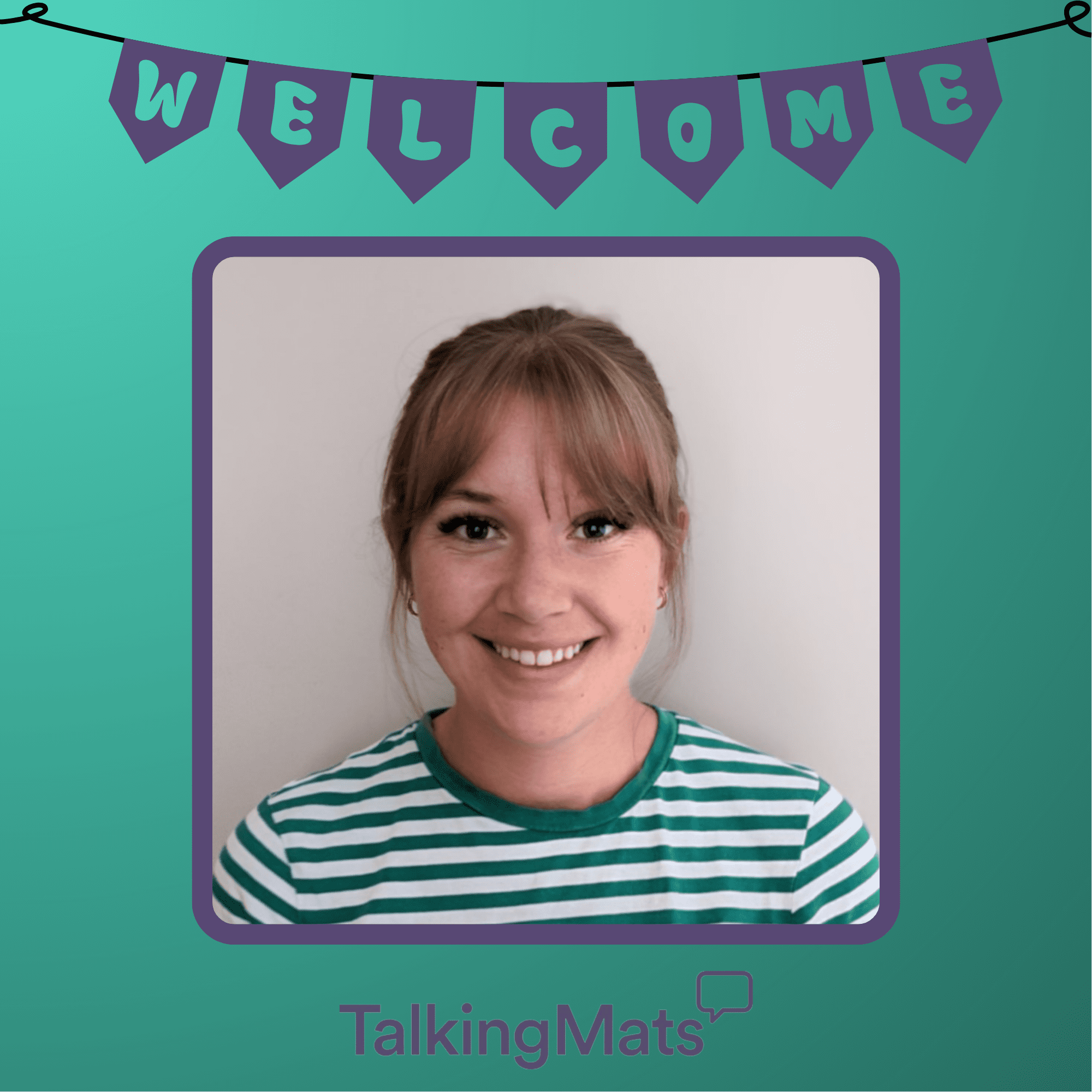
Do you need training to use Talking Mats?
Do you need training to use Talking Mats ?
Talking Mats is an effective but deceptively simple tool so a question we are often asked is do you need training to use it. Communication and supporting people with communication difficulties is a complex process and Talking Mats is based on a number of research projects which examined who could use Talking Mats, and how best to use it in different situations. It is therefore important that the integrity of the Talking Mats model is maintained and that Talking Mats training teaches the principles developed from our evidence base.
All our trainers are registered with Talking Mats and provide high quality training based on robust research findings. Only trainers accredited by Talking Mats are eligible to train others.
Some of these principles include:
- Understanding who can and who cannot benefit from using Talking Mats
- Asking open questions
- Handing over control
- Pacing
- Maintaining neutrality
- Interpreting additional information including both non-verbal and verbal information
- Matching the top scale to the question or view being explored
- Presenting the options in an order that maximises the individuals ability to respond by using our model which focuses on concrete to abstract symbols
- Monitoring language complexity and topic sensitivity
All our training courses include hands-on practice and video examples as well as reflection on all these aspects of using Talking Mats
The techniques used in Talking Mats accord with best practice guidance in semi –structured interview techniques including:
- being clear in what you want to find out and using open questions
- enabling elaboration in whatever form is appropriate
- planning in advance but in a context that is flexible and can respond to the dynamics of the conversation
- being cognisant of the influence of the environment
- taking time to establish engagement and rapport
- being non-judgemental
- supportive of periods of silence
- ensuring there is a summary at the end so that both parties agree on what was said .
So whilst Talking Mats may seem simple, it is not simplistic. The listener is creating a space that enables the thinker to think and express themselves. Training gives the listener time to reflect on the components of an effective Talking Mats conversation and identify which ones they are already skilled in and which ones they need to develop further. There are no short cuts to reflective practice training and we know Talking Mats foundation training has impact. Time and time again people who thought they knew about Talking Mats reflect and say things like ‘I got so much more from this training than I expected’ or ‘ I now see I can use Talking Mats for so many different conversations not just ’ I like’ , ‘I don’t like’ ‘or ‘I have been using Talking Mats but now feel much more confident to use it and to make my own submats’

This is why we put so much emphasis on training. We have developed our successful “Train the trainer” scheme to ensure that quality is maintained and reflective practice maintained. If Talking Mats is passed by word of mouth then key aspects of the framework are missed and/or misinterpreted which in turn lessens its effectiveness and impact.
People who come on training are often excited, want to tell colleagues and share it with others. Demonstration and sharing is fine, but it is important to be aware of the difference between sharing and training.
Sharing can often be appropriate especially when there is a team of people supporting the person or parents are keen to see how it works. You can show someone how to use a Talking Mat about a specific conversation. We call this a ‘demonstrating model’. It is helpful to give the listener the words to say to go with it. That way you are enabling other colleagues or family members to have an effective but specific conversation only.
If they then want to use it for other conversations we would strongly recommend they go on to attend the training. Attending a foundation course will enable them:
- to get more out of the technique
- to understand more about their own communication
- to become creative in their use of Talking Mats whilst still adhering to the research principles
- to be able to create their own mats or explore a topic in more depth using submats
So do you need training to use Talking Mats ? The answer is a resounding yes . Training supports you to be an effective Talking Mats listener and get the most out of this versatile communication framework. So if you have not attended a course check out our course opportunities.
 Online training login
Online training login 






